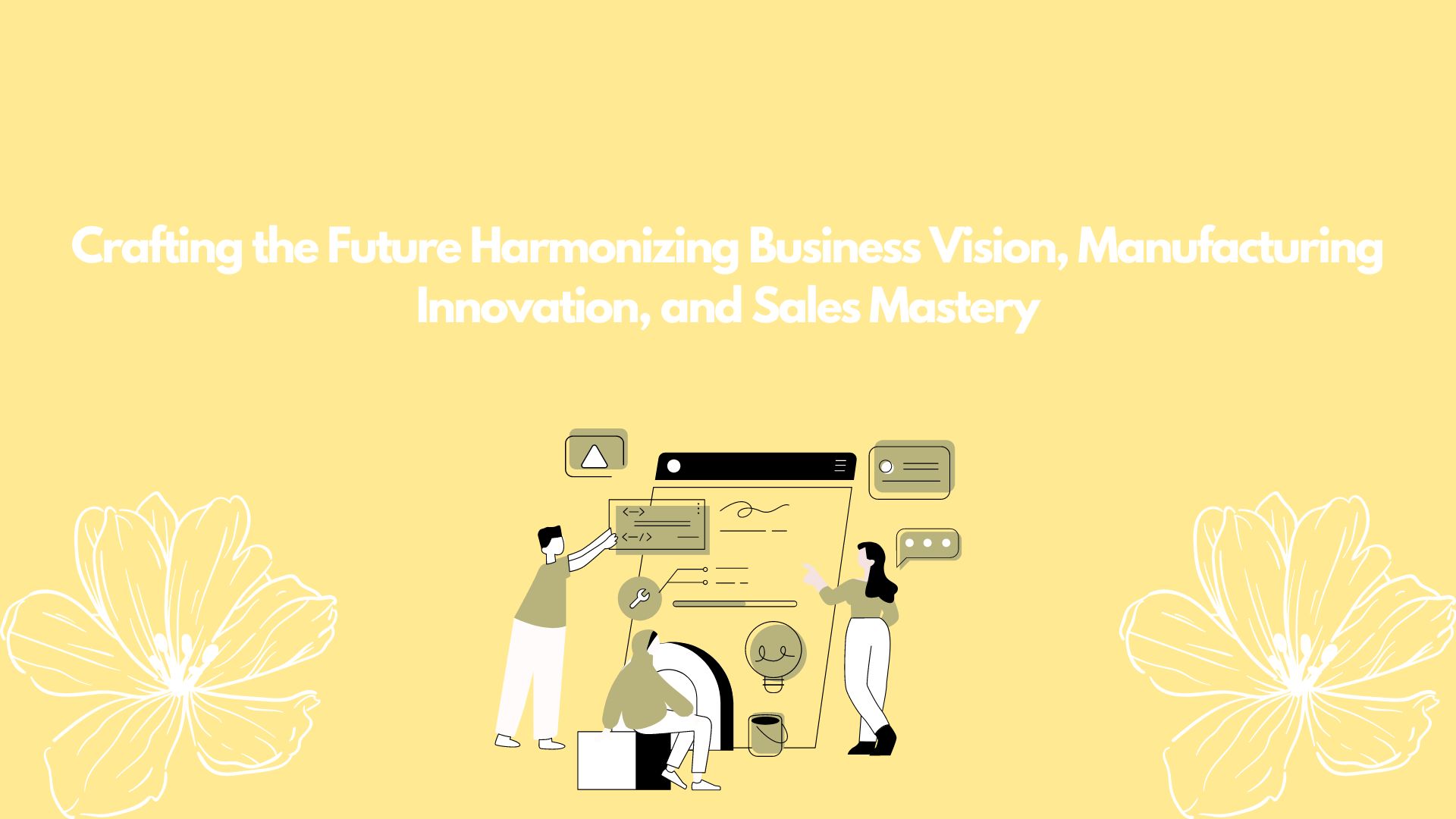In today’s rapidly evolving business landscape, success requires more than just isolated excellence in business, manufacturing, or sales. The most prosperous companies are those that masterfully harmonize these three elements, creating a synergistic ecosystem that drives growth, innovation, and long-term sustainability. This blog explores the importance of integrating business vision, manufacturing innovation, and sales mastery to craft a future of unparalleled success.
1. The Power of a Unified Business Vision
At the core of every thriving organization is a clear and compelling business vision. This vision serves as the North Star, guiding decision-making, strategy, and operations across all departments. A well-defined vision aligns the entire company, from the C-suite to the factory floor, ensuring that everyone is working towards the same goals.
However, a business vision is only as powerful as its execution. To truly craft the future, this vision must be translated into actionable strategies that permeate every aspect of the company, particularly in manufacturing and sales. By aligning these functions with the broader business vision, companies can ensure that innovation and market engagement are not just reactive, but proactive components of their growth strategy.
2. Manufacturing Innovation: The Engine of Progress
Manufacturing is the backbone of any product-based business. It’s where ideas become tangible products, and efficiency, quality, and innovation are paramount. To stay competitive, companies must constantly innovate their manufacturing processes, adopting new technologies, methodologies, and approaches that increase efficiency, reduce costs, and improve product quality.
Innovation in manufacturing is not just about adopting the latest technology; it’s about creating a culture that embraces change and encourages continuous improvement. This might involve investing in smart manufacturing technologies like IoT, AI, and robotics, which enable greater precision, flexibility, and scalability. It also requires a commitment to sustainability, as more consumers and partners demand eco-friendly practices.
A forward-thinking manufacturing strategy ensures that production processes are not just meeting current demands but are also adaptable to future market shifts. By doing so, manufacturing becomes a dynamic force that supports the company’s long-term vision, driving both product excellence and market relevance.
3. Sales Mastery: Bridging the Gap Between Production and Profit
While manufacturing turns vision into reality, sales turn reality into revenue. The sales function is where the company’s efforts are realized in the marketplace, making it a critical link between production and profit.
Sales mastery goes beyond closing deals; it involves understanding market needs, anticipating trends, and effectively communicating the value of the company’s products. A successful sales strategy is deeply connected to both the business vision and the manufacturing capabilities. Sales teams must be equipped with insights from manufacturing to highlight unique product features, while also being aligned with the overarching business goals to ensure they are targeting the right markets and opportunities.
Moreover, in today’s customer-centric world, sales teams must also focus on building long-term relationships, offering personalized solutions, and delivering exceptional customer experiences. By mastering these aspects, companies can create loyal customers who not only buy products but also advocate for the brand.
4. The Synergy of Integration
The true power of business vision, manufacturing innovation, and sales mastery lies in their integration. When these elements are harmonized, they create a powerful synergy that drives sustainable growth and competitive advantage.
For instance, a unified approach allows for real-time feedback loops between sales and manufacturing, where customer insights directly inform production improvements, and manufacturing innovations enhance the sales proposition. This alignment ensures that the entire organization is agile, responsive, and capable of seizing new opportunities as they arise.
Furthermore, this integration fosters a culture of collaboration, where cross-functional teams work together to solve problems, innovate, and drive the company forward. It breaks down silos and encourages a holistic approach to business, where every department understands and supports the broader vision.
5. Conclusion: Crafting a Future of Success
In a world where change is the only constant, the companies that thrive are those that can seamlessly integrate their business vision with manufacturing innovation and sales mastery. By crafting a future where these elements are in harmony, businesses can not only survive but also lead in their industries.
This harmonious approach ensures that every part of the organization is aligned with the same goals, driving efficiency, innovation, and profitability. As companies look to the future, they must remember that success is not just about excelling in one area but about creating a cohesive, integrated strategy that empowers every aspect of the business to contribute to a brighter, more successful future.
4o









